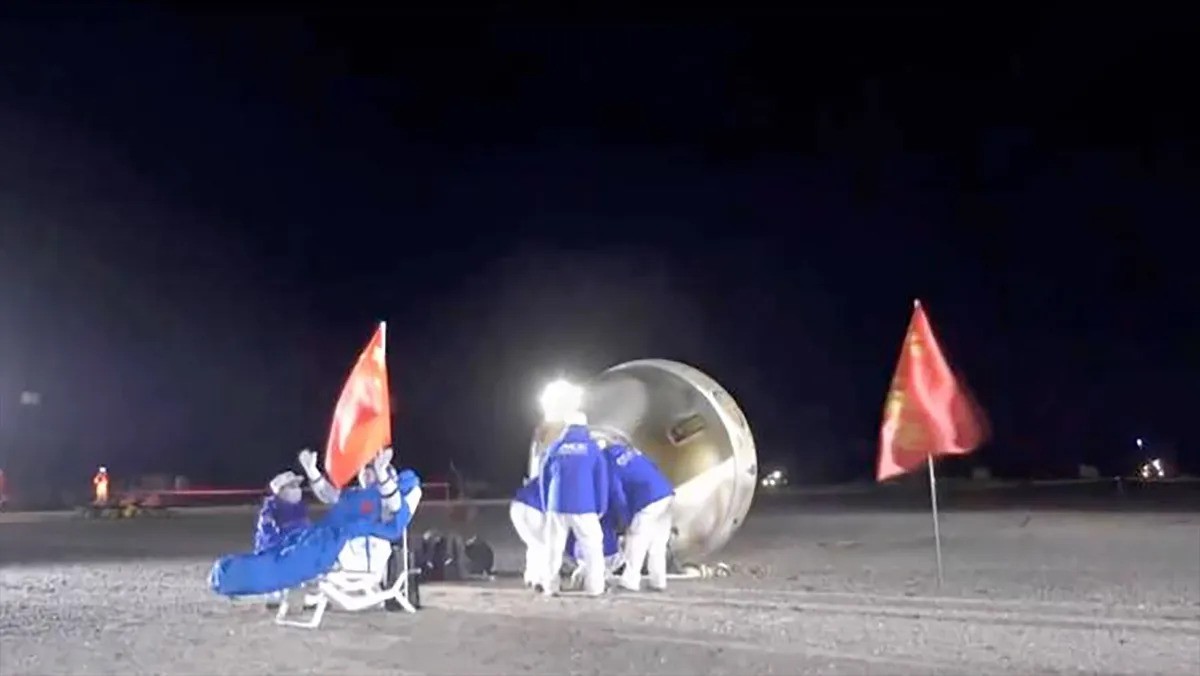Three Chinese astronauts spending the last six months on the Tiangong space station have returned to Earth. On Sunday, November 3, the Shenzhou18 spacecraft made a successful landing in the Gobi Desert.

Return to Earth
The crew of China’s Shenzhou-18 spacecraft has returned home after more than six months in space.
Astronauts Ye Guangfu, Li Cong and Li Guangsu lived aboard China’s Tiangong space station since April 25 this year. They completed their mission on Sunday (November 3), landing at Dongfeng Space Center in northern China.
The landing occurred at approximately 12:24 p.m. EST. All three astronauts are in good health, according to the China Manned Spaceflight Agency.
This is the second time astronauts have landed on Dongfeng at night. The observation and search and rescue teams used infrared thermal imagers to track the capsule.
Achievements of Chinese astronauts in orbit
Before leaving the space station, the commander and his crew members conducted a number of scientific experiments during their stay aboard the Tiangong, including studying ancient microbes. In May, they performed a national record spacewalk outside the space station, and in June they began another one to install a space debris shield. Recently, Ye Guangfu has also become the first Chinese astronaut to spend 365 days in space, having previously been part of the Shenzhou 13 mission from 2021-2022.
The trio also conducted emergency drills and shot video from the Jiuquan Satellite Launch Center in the Gobi Desert, from where the satellites launched in April, and the Wenchang Spaceport on Hainan Island, from where the Tiangong modules were launched.
Trinity congratulated the arriving Shenzhou-19 crew aboard Tiangong on October 30, which meant China briefly had six astronauts in space. Commander Ye officially handed over control of the orbital outpost to new expedition commander Cai Xuzhe on November 1. The official ceremony marked China’s fifth such orbit change since the three-module space station was completed in late 2022.
China intends to keep Tiangong, which is about 20 percent more massive than the International Space Station, in permanent orbit and operational for at least a decade. Officials recently unveiled plans to expand the space station into a double T-shape by adding three new modules. A Hubble-class space telescope will be launched into the same orbit and will be able to dock with Tiangong for maintenance and repair.
Provided by www.space.com


